#sulfur bacteria
Explore tagged Tumblr posts
Text
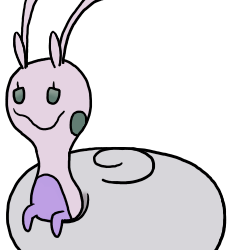

Doodledex - #705-A Hisuian Sliggoo
While there's no outward change to the Goomy that lived in Hisui, the same can't be said for their evolution! Thanks to exposure to high concentrations of iron in the water there, Hisuian Sliggoo are Steel/Dragon types and have developed a large, round, metallic shell! (And yeah, this technically makes them snails instead of slugs.)
However, unlike normal snails that only keep their organs in their shell, Hisuian Sliggoo holes its entire body up in there, with only its head and arms sticking out! It seems like this would make it awkward to move around... but when it needs to go fast it will retract all the way into its shell, stand itself up on its side and roll away!
#pokemon#doodledex#sliggoo#hisuian sliggoo#while iron kinda exists in the bodies of most organisms#(vertebrates especially: it's what makes our blood red!)#an iron shell isn't actually all that strange!#the scaly-foot gastropod is a kind of deep sea snail that really does have iron in its shell!#(and as its name implies in the scales on its foot as well!)#these guys live around hydrothermal vents... which also happens to be where they get their iron!#well more specifically they wind up releasing iron sulfides released by the special bacteria in their bodies that help them process the uh.#vent soup? as the scales and the outer layer of their shell. because apparently snails usually can't handle sulfur all that well#but thanks to this the snail doesn't die of sulfur poisoning AND gets armor out of it!#(one of these iron sulfites is pyrite! there are snails with fool's gold in their bodies and that's pretty darn neat!)
14 notes
·
View notes
Text

Zwitterionic polymeric sulfur ylides: A new generation of antifouling and bactericidal materials
Bacteria that gather into biofilms on the surfaces of implants, catheters, breathing tubes, and other medical components are a serious health hazard. In the journal Angewandte Chemie International Edition, a research team from the Netherlands has now introduced a new material based on poly(sulfur ylides) that—when applied as coating—effectively inhibits this process known as "fouling." The coating minimizes the adhesion of bacteria to surfaces and is also a bactericide while not affecting mammalian cells. Bacteria organized into biofilms are especially stubborn and often resistant to antibiotics. It is estimated that 65% of infections acquired in hospitals originate from biofilms. The cause is frequently contamination with infectious bacteria from a patient's skin or pathogens that circulate in the bloodstream. The first step is adhesion of the bacteria to a surface. To inhibit this, exposed surfaces are given antifouling coatings, usually made of polyethylene glycol (PEG). PEG binds to water molecules, which then form a hydration layer—an effective barrier against the undesired adsorption of biomolecules and bacterial cells. However, recent research has revealed that PEG also has disadvantages in that it seems to trigger immune responses.
Read more.
#Materials Science#Science#Zwitterions#Polymers#Sulfur#Antifouling#Bacteria#Medical technology#Coatings
10 notes
·
View notes
Text
Why Your Get Morning Breath smells so bad 😷
Have you ever wondered why your breath smells so bad in the morning?. Well the reason is grosser than you might think. You see when you sleep you produce less saliva. and this makes your mouth dry, which creates an environment that bacteria thrive in. These bacteria eats dead cells and food particles in your mouth and after they eat, they leave waste that has Sulfur in it . Which is why your mouth has that potent morning breath.

5 notes
·
View notes
Text






time for a mud update :) my pandemic baby...shes now 23 months old <3
#theres some very purple and very red purple sulfur bacteria <3#winogradsky column#microbiology#microorganisms#microbes#shsn
4 notes
·
View notes
Text
Without these sugars, no animals on Earth could exist – only other things that can photosynthesise, and a handful of specialised bacteria that can feed off sulphur, methane or the heat from lava.
"Soil: The incredible story of what keeps the earth, and us, healthy" - Matthew Evans
#book quote#soil#matthew evans#nonfiction#sugar#earth#existence#photosynthesis#bacteria#sulfur#methane#lava
0 notes
Text
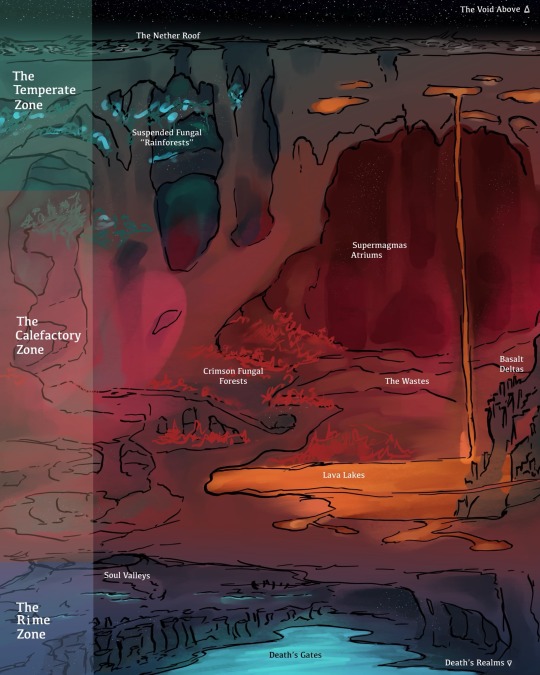
Since my other Nether worldbuilding post was received pretty well... I'm back on my bullshit!
This time featuring zoning and biomes of the Neath: Lore below cut
Nether (noun): the formidable hellscape straddling the boundery between the Fragments of the Overworld and Death's Realms.
Derived from Beneath -> Neath -> Neth -> Nether.
The Nether is most easily accessable through outer regions of the nether, regions that are comparatively closed-off, and lacking in biodiversity compared to the Deep Nether where most Neath civilizations are centered.
The Neth is divided into three primary zones, distinguished by altitude and general climates.
The Calfactory Zone: the largest and most iconic of the three, the Calfactory zone is blisteringly hot and bone-dry, it's most prominent features are its abundant seas and lakes of magma, and the massive Supermagmas atriums that are common above the magma. In the largest of these atriums, the ceiling may be so high above as to be completely invisible from the ground, obscured by an ever present smog of toxic vapor and minerals formed in the self-generated micro-climates that are generated from the rising heat of the lava that begins to cool at a higher altitude.
In the Basalt Deltas and other biomes around the edges of these lakes, massive pillars of rock and crystals bulwark the more-visible ceiling.
The most common of this zone’s biomes is the Crimson woods, home to hearty thermal-philic fungi and plants that grow on the minerals and vapors of the lakes. Many are carnivorous in their lack of access to water or sunlight, and these forests contain many sub-biomes and ecosystems of flourishing life.
The Wastes are perhaps the most desolate regions of the Neath, irradiated deserts of red-rock, brimstone, and sharp sand. Even the vast majority of nether-folk avoid these deserts due to the leftover radiation that rots and destroys anything that waits too long. The only forms of life are particularly robust lichens and bacteria that are happy to sit by the boiling pools of sulfur and mud and toxic sludge that dot the landscape. Growing within the rocks themselves are colonies of amorphous fungus, called geocorpus molds, they get their spores into cracks in the soft netherack and slowly feed on it; the ‘rock meat’ is considered a delicacy in nether cuisine.
The Temperate Zone: Cradled in the heights of the Neath’s atriums and sat below the roof is the temperate zones; the rising heat of the zone below begins to cool and by doing so, distinct weather patterns form within this zone, leaving it, while still sweltering, a cooler though much more humid climate.
The main biome are the luminescent warped-fungal rainforests that collect the high-rising minerals and odd moisture from the lakes. Liquid is actually present here, though, if it’s not safely filtered through the innards of the various plants and fungi, this water is usually aggressively corrosive, and it is best to shelter from the acidic precipitation to avoid chemical burns. The nether folk and ender local to these rainforests are suited to deal with these conditions and the ender especially do not have trouble with the extreme pH of the water here like they would in the overworld. The zone is lit almost exclusively by the biolumincense of the organisms there and have often been described as false-stars.
In the Deep Nether, the ceiling may give way, allowing one to pass onto the plateaus of the Nether Roof and the yawning void above. The bedrock of the nether roof is jagged and layered in huge slabs, sometimes broken up my mazes of pillar-like structures and shallow, thermal pools of crystal-clear liquid. The kind you don't want to touch of course. fogs may hang low to the ground, but when its clear, or above the fog, the entire universe seems to spill out into the sky. The nether roof was culturally significant and a source of much knowledge and inspiration in the early days, but I'll get more into that in a later post 0.0
The Rime Zone: Plunge deep enough and one might find themselves bellow the lava beds. Here, where the heat can't quite penetrate, the temperatures will drop rapidly to sub-zero.
Namely, the Rime Zone is made up of the soul valleys, flat steppes of cinder and clotted sand, you can imagine it almost with the blindness effect, a fog that pools by your feet, and a heavier darkness hanging from the sky, it feels massive and endless and claustrophobic all at once. Frost collects as crystals on the irradiated, soul-soaked barrens, and the bones of the massive nether wyrms lie fossilized, breaking up the landscape. The sands are also split with patches of crazing on the ground and vents of blue fire that spills out and sets the sand ablaze.
These same wryms can be found sometimes, ancient things that dig through sand and soft rocks and the magma lakes, far and few between and treated with both fear and reverence.
And in the deepest pits of the Neath are the glowing frozen lakes that are colloquially and rightfully called the Gates to Death, glowing blue from beneath their surfaces. Indeed, any further down and you pass into limbo, the edge of Death's Realms.
Extra Notes??:
Soul sand/soil is tread on carefully or not at all, is one form of remnants from the apocolyspe. Like the general radiated rubble present through the Nether, it's a fault of nuclear fallout. Unlike other areas of radiation, its also been infused with the souls of those who didn't survive the joining of worlds. That said, unlike soul sand, soul soil is used productively to grow certain nether crops. It’s minerally and magically dense.
This infused quality is also precent in Nether Debris, resulting in a material that takes magic particularly well.
Iron cannot be found in dense veins and crystals like gold or quartz in the nether, but it's a pretty rich mineral a lot of netherack, giving it its ruddy coloring.
Sorry for this massive rant that no one asked for. If you have questions please feel free to send an ask, I may not have an answer yet but I'll certainly come up with one if I can.
I'm also hoping to do a pass on my headcanons about history and culture in the Nether and then we might start talking about character headcanons since this is also an actual AU.
If you read this far, here's some notes on striders and ghast
#minecraft#minecraft worldbuilding#Minecraft lore#speculative worldbuilding#minecraft nether#the nether#dreamingverse au#my art
2K notes
·
View notes
Text
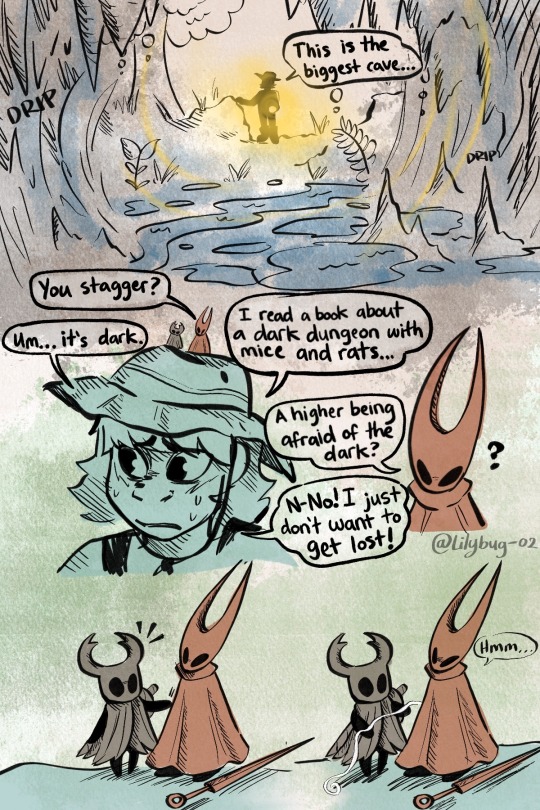
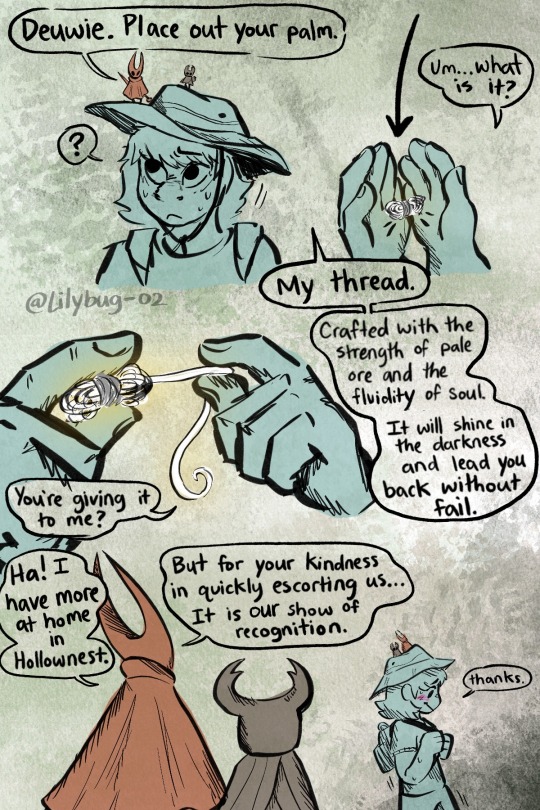
A Gift from the underworld.
Bug Fact: The blood-red worm (Limnodrilus sulphurensis) is a newly discovered species that live off sulfur-eating bacteria in toxic spring waters.
First || Prev // Next
Masterpost
#The Tale of Despereaux reference!#you can imagine that gift of thread is very important to Hornet#Into the cave we go!#hollow knight#hollow knight knight#hollow knight hornet#hollow knight au#hollow knight comic#mini comic#my art#art#dewi#hollow knight humans#Dewi's Adventures in Hollow Knight
2K notes
·
View notes
Text
The world’s heaviest worms thrive in an extreme environment. 🔥✨ Towering colonies of giant tubeworms (Riftia pachyptila) grow where hot, mineral-laden water flows out of the deep seafloor. Unlike most animals, they don’t eat; instead, bacteria living in their guts transform sulfur into energy for them. As harsh as their environment is, giant tubeworms live surrounded by a community of other animals—and their size doesn’t necessarily protect them. Their gills, which resemble foot-long red feathers, can be a vulnerable target for predators. The worms can quickly retract their gills into the tube if a hungry predator, like a vent crab, ventures too close. When volcanic activity deep below the seafloor changes, the hot water sometimes stops flowing. In this case, the entire worm colony may die off. But when new hot springs pop up in other areas—often dozens or even hundreds of miles away—the tubeworm larvae quickly colonize them. Stay tuned for a closer look at the astonishing communities these worms call home and how MBARI researchers are learning more about them.
273 notes
·
View notes
Text
abiogenesis & endosymbiosis timeline
I put this together after reading Nick Lane's The Vital Question. The proposed timeline:
3.8bya: The earliest evidence for life is isotopic fractionation. The carbon (and iron, sulfur, nitrogen) atoms in graphite in Greenland are non-randomly sorted, which indicates the presence of cells whose enzymes have a slight preference for the lighter forms of each. However, geological processes can also produce non-random sorting, so this evidence is ambiguous.
3.5bya: Less ambiguously, we have microfossils that look like cells, again with isotopic signatures.
We think bacteria and archaea split off really early, close to the beginning of life (abiogenesis) itself. This is because their cell walls and membranes are so different it's hard to see how one could have evolved from the other. They probably emerged in parallel when they became independent at all. (Quick sketch of abiogenesis, and bacteria/archaea divergences.)
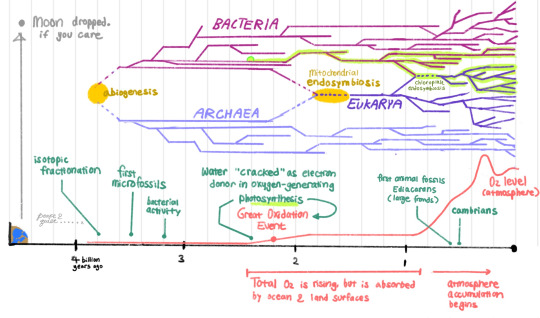
3.2bya: We see bacterial activity in rust bands in rocks. When bacteria strip electrons from iron dissolved in the oceans, the oxidated iron precipitates out into rust and sinks down to the ocean floor.
All bacteria and archaea respire (strip electrons from a donor 'fuel' to generate ATP, which fuels cellular activity). Many donors are possible – common ones are Fe2+, H2S, or H2O (which respectively become Fe3+, S, and O2 after the electron is stripped). Water is the last to be cracked as a donor.
2.4bya: It's cracked now, by some bacteria (archaea never manage it), which leads to The Great Oxidation Event. The oxygen is first absorbed by the oceans, the seabed, and land surfaces. It'll take over a billion years before the oxygen 'sinks' are exhausted, and oxygen accumulates in the atmosphere for real.
1.8bya: A bacterium somehow ends up inside an archaeon cell, and somehow they don't die about it. The bacterium becomes a specialized energy-producing unit, allowing the host cell to grow larger and more complex. They become the first eukaryote, invent sex, and spawn all complex life. (You can read my RPF about it btw.)
1bya: This engulfment – endosymbiosis – happens one more time, to produce chloroplasts in plants.
0.5-6bya: Atmospheric oxygen levels are rising for real now. We see large complex eukaryotes for the first time. These creatures have specialized tissues whose failure threatens the entire organism, and it becomes advantageous to separate out the germline (the part of eukaryotes that divide forever, e.g. sperm and eggs) and make the rest of the body just durable enough to last as long as the most failure-prone tissues. Death by design has entered the world.
188 notes
·
View notes
Text
Writing Notes: Whale Fall

Whale Fall - the carcass of a whale that sinks to the seafloor when it dies. It provides a sudden, concentrated food source and a bonanza for organisms in the deep sea for years to come.

Common Organisms Found on a Whale Fall: 1 = Hagfish; 2 = Sixgill Shark; 8 = Giant Isopod

3 = Rattail Fish; 4 = Eelpout Fish; 5 = Sea Pig; 6 = Pom-Pom Anemone; 7 = Muusoctopus; 9 = Amphipods; 10 = Grooved Tanner Crab; 11 = Hesionid Worms; 12 = Ampharetid Worms; 13 = Osedax Worms; 14 = Brittle Star; 17 = Hooded Shrimp; 18 = Squat Lobster

15 = Rubyspira Snails; 16 = Mussels
Whale Fall in Monterey Bay National Marine Sanctuary

When a whale dies, the story has just begun. The massive carcass sinks to the seafloor, where it provides food for a deep sea ecosystem on the otherwise mostly barren seafloor. There are several stages to the whale fall ecosystem as different parts of the whale are used up.
Timeline of a Whale Fall

Stages of a Whale Fall
Scientists have identified 4 stages of a whale fall. The stages – which often overlap or blend together – start with the head (Stage 1) and end at the tail (Stage 4). The duration of these stages is estimated, and varies depending on the size and species of the whale.

In the 1st phase, mobile scavengers such as ratfish, hagfish and sharks smell whale on the water and swim from afar, feeding for up to 2 years on the dead whale's soft flesh.

In the 2nd phase (the enrichment-opportunist stage), worms, crustaceans and mollusks feed on leftover blubber, often burrowing into the nutrient-enriched sediment beneath the whale for around two years.

The 3rd stage (sulfophilic stage) can last decades. With only the skeleton remaining, bacteria begin breaking down lipids trapped inside the bones, generating sulfur, which attracts more bacteria and a larger community of diverse and rare species including mussels, worms, snails, and others. This diversity of species found in this last stage is larger than any known community on the deep seafloor.

In the 4th stage, the mineral remains of the skeleton are colonized primarily by suspension feeders exploiting flow enhancement and hard substrates after the depletion of organic material.
Creatures of a Whale Fall





Sources: 1 2 3 4 5 6 ⚜ More: Writing Notes & References
#requested#whale fall#writeblr#dark academia#writing reference#spilled ink#literature#writers on tumblr#writing prompt#creative writing#light academia#lit#writing ideas#writing inspiration#nature#animals#writing resources
56 notes
·
View notes
Text
A mysterious and rapid rise in Legionnaires' disease, a severe bacterial lung infection, has been linked to cleaner air, in a US study of trends in sulfur dioxide pollution. Puzzled by the lengthy global upsurge in Legionnaires' disease, an atypical form of pneumonia caused by Legionella bacteria, researchers at two US universities and the New York State Department of Health investigated possible environmental factors that could explain the trend in their neck of the woods.
Continue Reading.
229 notes
·
View notes
Text
thriller
820 words, @wolfstarmicrofic
“There’s a spy in the Order.”
Moody’s rough growl was followed by silence. Cold, suffocating, hands-around-your-neck type of silence. Sirius broke it.
“Can I speak to you in private?”
Moody raised a brow, but otherwise nodded, and he and Sirius left the room, leaving the rest of the Order to whisper in rushed hushes behind their backs.
“What would you like to tell me, Black?” Moody focused intently on his face, his small, dark eye narrowed to make it even smaller, and the bright blue one unblinkingly unsettling.
Sirius didn’t let it perturb him. “Lupin is the spy.”
Moody sucked in a breath. “You’re telling me your boyfriend—”
“Ex. And we weren’t ever boyfriends, ‘cause he never wanted to label it.”
“Right. If you’re being salty—”
“I’m not. I can prove it.”
- - -
“Lupin is the spy.”
James huffed impatiently. “Sirius, I swear to Merlin, he’s our friend, and his name is Remus.”
Peter looked scared. “He might be the spy… he’s a werewolf—”
Sirius turned sharply, halting his pacing to tower over Peter. Peter’s eyes widened, and he tried to curl up further into the couch, but Sirius maintained his intimidating stance. “What the fuck, you cunt? It’s not because he’s a werewolf! That has nothing to do with it. I don’t care if he’s a werewolf. Being a werewolf doesn’t dictate his fucking personality. Werewolves are like humans, because they are humans, and humans can be good or bad or anything. And Lupin. He’s just bad.”
Peter looked at him with wide eyes. James shook his head, and tried to defend both Remus and werewolves, but Sirius wasn’t listening. Lupin was bad, Lupin was bad, Lupin was, Lupin. Lupin.
- - -
Pub night. Surprise, Lupin wasn’t available. Stuck on another mission. Because it’s believable to have missions every minute of the day, right? So explain why all the other members of the Order were free? Why didn’t they also have constant missions?
Lupin was the spy.
“I’m gonna head home,” Sirius announced. James pouted. Peter looked as if he were trying to read him, except Peter was too dumb to read. Everyone said their goodbyes.
- - -
He was not heading home. Unless home was Lupin, because then he was heading home.
Shit. Lupin was not home. Not home. Lupin.
- - -
Lupin’s. Oh. Remus still left his bathroom window open overnight. Lupin. Remus was dead.
But this part of him was alive.
The Remus who’d laugh whenever they showered together for too long under scalding water, unable to see each other through the thick, cloudy steam, but always touching. Even if the water was burning, they’d still kiss red and hot, and burn even more. Even if they couldn’t see each other, they’d always know each other.
And after, Remus would leave the window open, to stop the moisture growing bacteria over their surfaces, because he was adorably concerned over things like that. Then he’d forget to close the window overnight, because he was endearingly unconcerned about his own safety. He was precious.
Now he was gone. Lupin was here, and Sirius wanted to punch him until Remus was back.
- - -
He cast a Disillusionment over himself and climbed through the open window. Although he could’ve just used the front door, because Lupin wasn’t home.
He crept to their — Lupin’s — bedroom. Why was he creeping? He could just walk.
But this felt illicit. He opened a drawer. Illicit.
Pages of tea-stained parchment, same charm as the Marauders’ map. Revealing charms wouldn’t work. But this might.
Sirius transformed into his Animagus form. He sniffed the letters. Dark magic. From all his years living in Grimmauld Place, surrounded by it. Awful, metallic, blood on his tongue. Sulfuric, smokey, fumes in his lungs. This was the magic of Death Eaters.
- - -
There was a calendar on Lupin’s wall. Apparently he hated dates. He’d stabbed all of the numbers repetitively, and it smelt salty. Tears.
Good. Lupin should be sad.
- - -
Lupin was the spy.
- - -
“James and I would like you to be our Secret Keeper,” Lily smiled at him, painful yet sweet.
Sirius knew what they were doing. Trying to make him think of something other than Lupin.
He would do anything to keep James, Harry and Lily alive. The Potters were his whole world.
But he wouldn’t stop thinking about Lupin.
- - -
“Make Peter the Secret Keeper.”
James and Lily looked at him, bewildered.
“The Death Eaters would suspect me immediately. You’ll be safest in Peter’s hands.”
James nodded. “Okay. I trust you, Padfoot.”
- - -
Sirius did not trust himself.
He was in love with the spy.
Obsessed, not love. He didn’t know how to love.
- - -
Sirius laughed. His chest was aching, and his ribcage was squeezing his lungs, so he laughed harder. He was barking.
Barking, and barking mad.
No, he didn’t know how to love.
He’d let James and Lily die. He’d made his Godson parentless. He let Peter get away with murder.
At least Lupin was still Remus.
#sirius black#remus lupin#wolfstar#remus x sirius#microfiction#wolfstar microfic#marauders#james potter#peter pettigrew#lily evans#mad eye moody#canon compliant#canon#obsession#psychological thriller
94 notes
·
View notes
Text
For polychaete day, here's a previous annelid post but edited to only have the polychaetes, some fun facts for you! :)
Sea mouse!

This luminous polychaete worm lives several thousand meters deep on the ocean floor, and sports these extremely light-reflecting scales! Each one is hollow and lined inside with hexagonal cylinders which reflect nearly 100% of the light that hits them. The sea mouse's quill-scales create the only documented case of a "complete spectrum photonic crystal" in an organism, that is, a nanostructure that alters the light entering them and can create the whole spectrum of light. It is thought that the quill-scales are so light reflective as to deter predators or to make the sea mouse's silhouette harder to see.
Bone-eating worms!

Come on tumblr, you love whalefalls, right? These worms are an important part of the whalefall ecosystem, boring into the bones with acid to feed on them! These peculiar animals lack a stomach and a mouth, instead relying on symbiotic bacteria that break down the bone material, after which they suck up the nutrients with "roots"! The red things you see above are the female worms' gills, as the males are in fact microscopic and live inside the females. These worms are valuable in returning every bit of nutrients back into the biochemical cycle!
Pompeii worm!

This deep sea worm is an extremophile if you've ever seen one, it also inhabits hydrothermal vents. They build a tube around themselves and seemingly shield themselves from the elements inside the tube with the help of a "fluffy" coat of sulfur-eating bacteria. What makes them especially fascinating is that their tail end comes to contact with temperatures of up to 80 °C (176°F) while their gills collect oxygen from the outside water that's only 22 °C (72°F)! 60 degrees Celsius of temperature difference to an animal only 13 cm in length, that's bonkers!
Gossamer worms!

These free-swimming polychaetes produce a yellow bioluminescent glow from the appendages at the sides of their body, which is unusual among animals! Gossamer worms have a unique style of swimming from other polychaetes, as they lack many bristles at the ends of their appendages and also the mesenteries in between each body segment. Still they swim, with great flexibility, speed, and maneuverability! It turns out that they retract and extend each appendage to cause differences in drag, causing a wave to undulate through the whole body, which in turn makes their thrust power even stronger. They might serve as inspiration for aquatic robots in the future!
59 notes
·
View notes
Text

Facts and Theories related to Fool's Gold and Norton
Part 1: Facts and Theories about Pyrite aka Fool's Gold
TLDR - Facts:
comes from the Greek word for fire
the dangers of pyrite oxidation (sulfuric acid, sulfur dioxide)
pyrite can contain small amounts of real gold, called “invisible gold”
TLDR - Theories
Pyrite containing real gold parallel to Norton being good deep down
Fire connection to Infernal Sin
Pollution in Lakeside water and soil as well as cause of fish and plants dying because of Golden Cave?
Part 2: Facts and Theories about how Norton escaped Golden Cave
TLDR:
Norton didn't just simply dig himself out
Facts about mines, mine collapses, dangers, potential escape routes, etc...
Part 1
Facts
Pyrite (aka fool’s gold) comes from the Greek word ‘pyros’ meaning ‘fire’, and will create sparks when struck against metal or a hard surface.
It is capable of scratching glass while most knives won’t be able to scratch it.
In the presence of moisture and oxygen, pyrite oxidizes, releasing its sulfur content as sulfuric acid.
Pyrite rich waste from mining operations can increase acidity of surface water. This can harm downstream ecosystems, animals, and even pose a risk to humans.
Sulfur dioxide is produced by burning the pyrite in coal, which can combine with moisture in the atmosphere to create acid rain.
Pyrite oxidation is sufficiently exothermic enough to produce heat, and as the temperature rises, the coal heats up and in some cases cause it to self-ignite and cause fire. This is called spontaneous combustion, a very real problem in coal mines. Pyrite dust can burn even with only a little oxygen, and it burns well due to its sulfur content. Sulfide fires can burn for years.
Despite its reputation, pyrite can sometimes contain small amounts of real gold, although it is notoriously hard to extract. This gold is sometimes referred to as “invisible gold” because it isn’t observable by the naked eye or standard microscopes (you need sophisticated scientific instruments). It can come in different forms: either as particles of gold, an alloy where the pyrite and gold are finely mixed, and in defects (imperfections created when the pyrite crystals are forming) in the crystal structure . With the latter form, the more deformed it is, the more gold there is in the defects.
And the discovery of new gold deposits declining world wide, with the quality of ore degrading in parallel to the value of precious metal increasing.
Invisible gold is primarily found in pyrite and arsenopyrite, and this is now a common resource for the gold mining industry.
Theories
I really wanted to bring up pyrite having some real gold (even if the amounts are very small). Especially as I can draw a parallel with that to Norton, who may normally seem suspicious, but he isn’t entirely bad. He may seem unapproachable, but you may make progress if you dig deep enough and try hard enough. He isn’t completely “worthless”.
Pyrite coming from the word for fire connects well to Infernal Sin, while pyrite being a fire starter in the fast due to its ability to create sparks fits well with Norton’s how we see Norton causing the explosion in Golden Cave in his trailer.
Then regarding the sulfuric acid, this actually made me wonder if the contamination in Lakeside, revealed in Yidhra’s letters, could be related to or from Golden Cave.
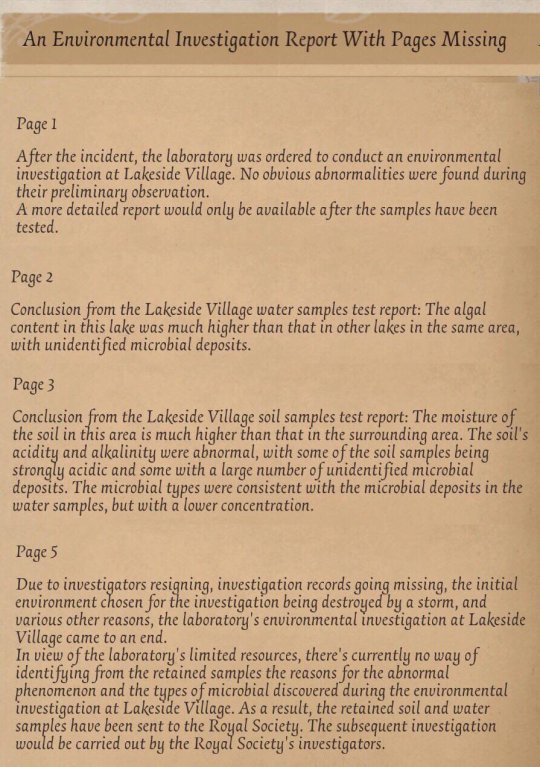
Ground water is water that seeps into the ground via rain or snow melt. As it makes its way underground, it can collect or react to the minerals and rocks down there, including pyrite, which can eventually result in the oxidation (and all its problems) I described earlier. This can percolate to form sediment at the bottom of rivers with mine drainage, which is water drained from mines. Acid runoff further dissolved heavy metals into water, and acid mine drainage can be increased by the action of certain bacteria (aka, sulfuric acid from pyrite can leech heavy metals from rock, and the acid can be worsened by bacterial action, resulting in this drainage becoming highly toxic).
Problems with mine drainage include contaminated drinking water, disrupted growth and reproduction of plants and animals, and corroding effects of acid on structures.
In general, sulfide rich and carbonate poor materials produce acid drainage. In contrast, alkaline rich materials, even with significant sulfide concentrations, often produce alkaline conditions in water.
Abandoned mines can fill with water (flood) because there’s no pumping occurring (the steam engine was 1st invented to solve mine flooding). This results in unabated chemical reactions, potentially making it very toxic, and this water can even discharge into lakes and streams, killing aquatic life and polluting the environment.
Further acid drainage can result from waste rock, which is material that must be removed to reach the ore. It is often deposited in piles close to the mine, and as it is exposed to air and moisture, it causes weathering, which can generate acid drainage.
Yidhra’s 3rd letter does mention “microbial deposits” in the water and soil as well as the soil’s “acidity and alkalinity”. So maybe it could be connected…?
Part 2
Thoughts regarding specifically how Norton escaped Golden Cave

Norton’s 3rd letter states the police report claimed Norton “dug his way out through a mountain creek a few dozen meters away from the mine”.
It is unlikely Norton simply dug himself out from the mine.
Golden Cave’s backstory states it was “hundreds of meters” deep at least. Mines back in that day (late 19th century) were already 1000s of feet deep (1 was 700-900m = 2300 – 3000ft). Prior to the 1850s, miners could simply walk in to a mine to get where they needed to go, but later on, the mines became so deep, they had to use steam elevators to enable access to deeper seems.

We know Norton was trapped in Golden Cave for some time after the mine collapse considering we know he came out with meteorite chunks. Based on what we see on the lowest level of Golden Cave in game, this likely implies the meteorite was potentially at the bottom, meaning there’d be quite some distance to dig himself out.
The other issue is most miners don’t simply dig themselves out after a collapse. There’s nothing to support the roof and sometimes little space to put the material you remove, not to mention usually a lack of suitable tools. Trying to dig yourself out of a collapsed mine may even weaken the area near the collapse, potentially causing further collapses. This is why most miners usually have to wait to be rescued.
It is possible that Norton was able to access an alternate escape route. Mines were required to have more than 1 shaft following the Hartley mine disaster in 1862. If it or a raise (vertical or inclined passage) had a safety ladder, it’s possible he could work his way back up. During the Barnes-Hecker mine disaster (the mine was flooded), the sole survivor saved himself by climbed 80 stories (around 800 feet) in just about 14 minutes.
Another option is via an intake airway (or downcast shaft), which brings fresh air from the surface into the underground mine. Miners could feel the air to figure out a way out of the mine, and this was breathable air, free from fumes and dust in the case of a fire or explosion. A return airway (upcast shaft) is also an option, but not as nice of one due to the fact it carried air out of the mine to the surface, and this air could include dust, toxic fumes, and such. But miners have escaped via vents before (such as in the Quecreek Mine disaster, which they did to escape the mine as it started flooding).
And if acid mine drainage is potentially related to the pollution and dead animals/plants in Lakeside (Yidhra’s 3rd letter, Grace trailer/deductions), maybe that means there was drainage or some other hole into or out of the mine around there that Norton could’ve used to escape. Norton’s deduction 9 does make it sound like police didn’t expect anyone to survive, which could imply the normal entrances or exits were inaccessible following the collapse, meaning using an alternate, less known route might make sense. We know Norton was knowledgeable, and in the trailer we see him with a map, though based on how his coworkers in that scene look like they might take it from him, he might not have had that, but he may have at least memorized the different ways in and out, and thus how he could manage to escape (especially as explosions can damage the lifts they use to normally get down to the deeper levels).
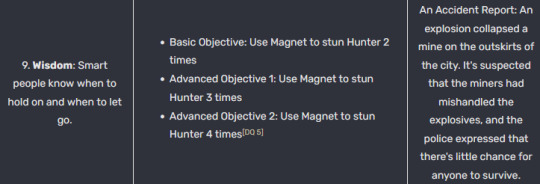
Norton likely survived due to being some distance from the blast. Some of his coworkers likely died from the initial explosion. The others potentially could’ve succumbed to lack of oxygen, potentially aided if any fires started as a result (which could further weaken supports or cause more collapses), or due to potentially high concentrations of firedamp further down. Afterdamp (choking gas) is a mix of toxic gases (carbon dioxide, carbon monoxide, and nitrogen) after a methane explosion, and it is just as deadly as the actual explosion. Symptoms include head swimming/disorientation, feeling very tired, difficulty doing anything or exerting yourself, and a desire to just close your eyes and go to sleep (followed soon by death from the lack of oxygen).
#idv#identity v#norton campbell#prospector#idv norton#identity v norton#idv prospector#identity v prospector#Fool's Gold#hunter norton#idv fool's gold#idv hunter norton#identity v fool's gold#identity v hunter Norton#sirenjose analyses and theories
68 notes
·
View notes
Text
Excerpt from this National Geographic story:
When colorful autumn leaves accumulate in your garden this season, it may be worth just leaving them there.
Leaf litter, commonly considered an eyesore, is a surprising microcosm of biodiversity. It serves as a cover for the most species-rich habitat: soil, which hosts more than half of all life on earth. Beneath piles of leaves, twigs, and bark, a variety of creatures flourish, from small reptiles such as salamanders and frogs to invertebrates like snails, earthworms, and spiders.
When invertebrates consume leaf matter, they break it up into smaller pieces. Then, tandem forces of bacteria and fungi decompose these pieces and convert them into valuable nutrients such as nitrogen, calcium, and sulfur that helps feed trees and other plants.
Those natural processes help replenish the soil and contribute to the life cycle as dead plant matter transforms into sustenance for living plants. Although leaf litter can look deceivingly stagnant, a microscopic world of activity teems beneath the foliage.
Environmental benefits
As a microhabitat, leaf litter is diverse. Structurally, it’s made of plant rubble such as leaves, flowers, bark, seeds, and twigs. Chemically, it contains substances such as cellulose and lignin. A 2023 study suggests leaf litter strengthens ecosystem biodiversity by making soil more fertile and reducing the risk of pathogens left behind by animals.
Leaf litter goes through three stages of decomposition to produce soil. The observable top layer is the litter layer. The second layer, composed of rotting leaves, is the fermenting layer. The last, completely rotted layer is built up of a thick and dark organic matter called humus, a type of soil that provides the ideal environment in which plants grow and thrive.
Think of that soil as an entire ecosystem, says Sue Barton, a plant and soil scientist at the University of Delaware.
“The soil system contains the mineral component, which is the sand, silt, and clay. It also has spaces that are filled with air or water, and then it has organic matter,” she says. “Then a living component, like earthworms and fungi and bacteria. It’s good to refer to soil as a complex system, rather than a single entity.”
17 notes
·
View notes
Text
Guys!

FOUR FUCKING GRUESOME HOURS LATER OVER THE SPAN OF LIKE THREE DAYS. My children are done.
These are my silly ocs that I’ve had for like three or four years now or something.

Zorn VS her old design

Haven VS his old design

Bella VS, uh oh, her two older designs

Kira VS her old design

AHHH THE BACTERIA IS GETTING POSSESSED
Moose VS his two older designs. His real name is Johnathan but people have just called him Moose since he was in kindergarten.

Zavist VS their older designs

Star VS her older
Their last names are pretty silly too
We got Zorn Mikester, Haven Simogal, Bella Lusten, Kira Javelins, Moose Hamenbur, Zavist Sulfurence, ans Star Sharstine.
Kira was originally another oc known as “Prince Seon William Denaris” but then I realised… why tf is royalty in the Pride Ring and with a bunch of lower classes, he’s the prince of Greed damn (Not Mammon, but related to Mammon) He’s now just a British dude.

Rest in chips, Seon, you will be missed, you silly little guy I still need to redesign anyways.
There’s like three years worth of lore on all of these people!!! You can ask questions please, I will answer them all truthfully I don’t even care what they say
Tbh, their lore has stayed somewhat consistent with minor changes like me giving Bella mental health problems, it’s a canon event. I love these ocs so much, I even made them in 2022 on C.ai or some shit. C.ai was so different back then damn. I’ve got to thank my past friend for giving me more mental issues, I have an addiction, help please
Okay anyways, questions are loved, and be a menace to society, just don’t join a cult
Note: Probably will change the designs in the future as I don’t really have designs for every ring, or I might just make them demons with a ton of different ethnicities
#artists of tumblr#art#artwork#drawing#my art#digital art#character art#oc#original character#artists on tumblr#my oc stuff#oc artwork#demon oc#old oc#ocs#oc art#my ocs#demon#my back is killing me#silly little guys#silly#sillyposting#silly little guy#so silly#silly goofy mood#send help#please help#just girlboss things#i swear im not crazy#im not insane
21 notes
·
View notes